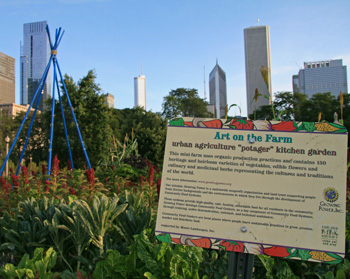
By: Luke Bujarski
Chicago’s green real estate investment market may have taken another step forward this month. Coordinated by the Chicago Metropolitan Agency for Planning (CMAP), the Better Buildings Initiative aims to create jobs and save people money on their energy bills by strengthening the market for energy efficient properties. The goal of the program is to leverage over 500 million dollars of public and private funds to retrofit over 8,000 residential, commercial, and industrial properties over the next three years.
A building “retrofit” refers to the various steps a property owner or manager can take to improve the efficiency of individual units and buildings. These include simple and economical measures like switching to compact florescent light bulbs, installing programmable thermostats, and filling air leaks through weather stripping and caulking. Retrofitting can also include more innovative and costly measures such as replacing old heating and cooling systems to more energy efficient models, installing green roofs, as well as onsite renewable energy systems including solar, wind, and geothermal.
As part of the Better Buildings Initiative, the Chicago region (one of 25 communities nationwide) was awarded a 25 million dollar grant from the U.S. Department of Energy to establish measures intended to jumpstart the building retrofit market. The region hopes to stimulate greater demand for greener properties by improving access to information, capital and the skilled labor needed to access building performance via energy audits, and the installation of these new technologies. As general public awareness of building efficiency grows, the hope is that more property owners will be incentivized to invest in new building energy technologies as a way to increase their net operating income.
As the real estate market rebounds from the economic downturn, the expectation is that the marketplace for energy efficient buildings will also grow. Green buildings make sense both as a way of lowering operating expenses, but also as a way to improve the attractiveness of properties over time. As a result, property owners and investors should be aware of the various initiatives and incentives currently being developed to stimulate this demand. For those actively considering a retrofit strategy for their existing building stock, Chicago’s Better Buildings Initiative could mark a good time to take advantage of incentives currently being developed for Chicago property owners and future investors.
Of particular focus will be improved access to capital for energy efficiency and alternative energy projects. By developing new financial products and broadening access to financing, the city hopes to incentivize more property owners and managers to consider retrofitting as a longer-term capital improvement project. Developers and investors can also expect to see more information about these various programs as Chicago moves forward with the retrofit ramp-up. Likewise, those currently rehabbing or building new properties might want to ensure that energy efficiency standards are being closely followed by contractors and subcontractors.
Related posts:
Leave a Reply
You must be logged in to post a comment.